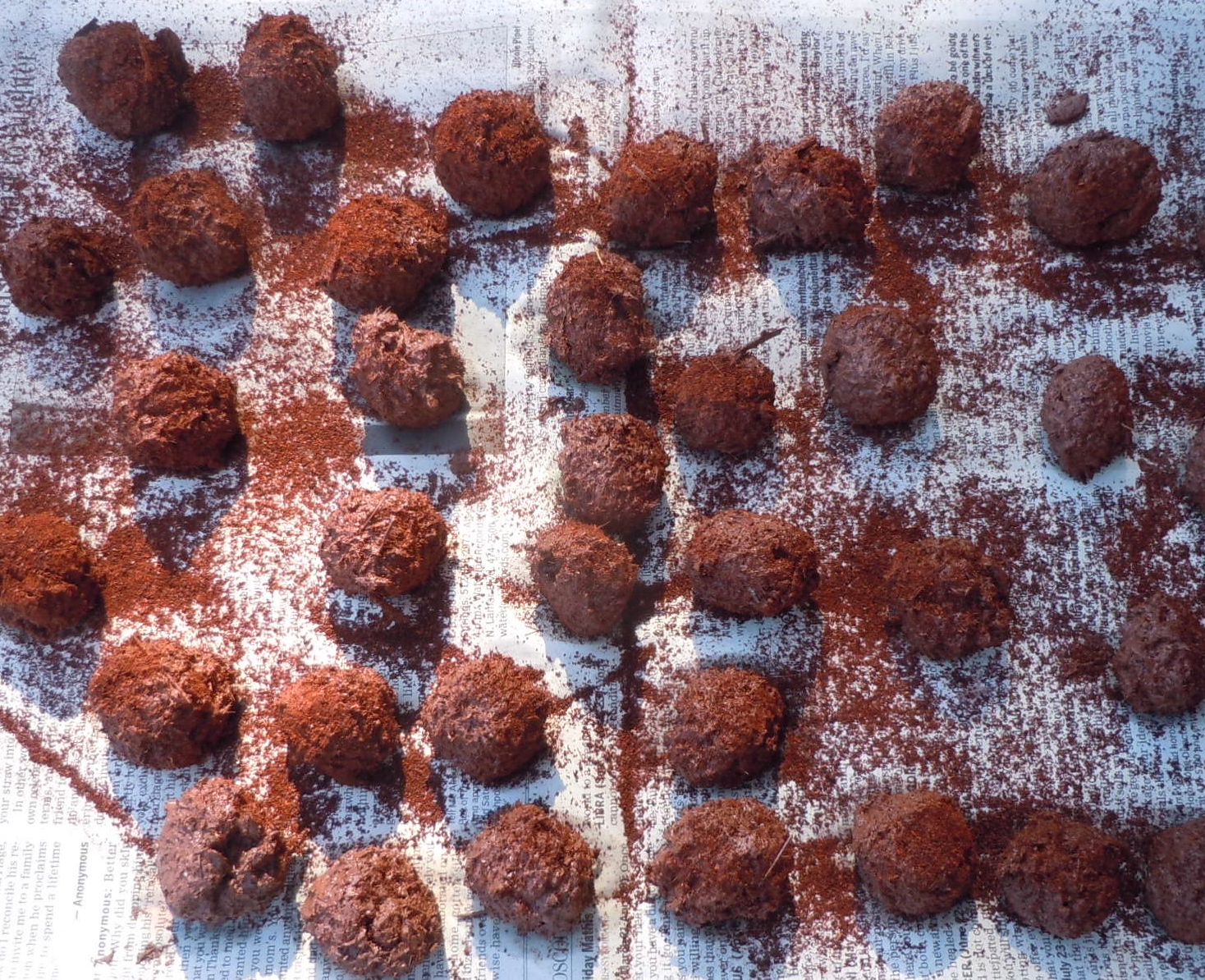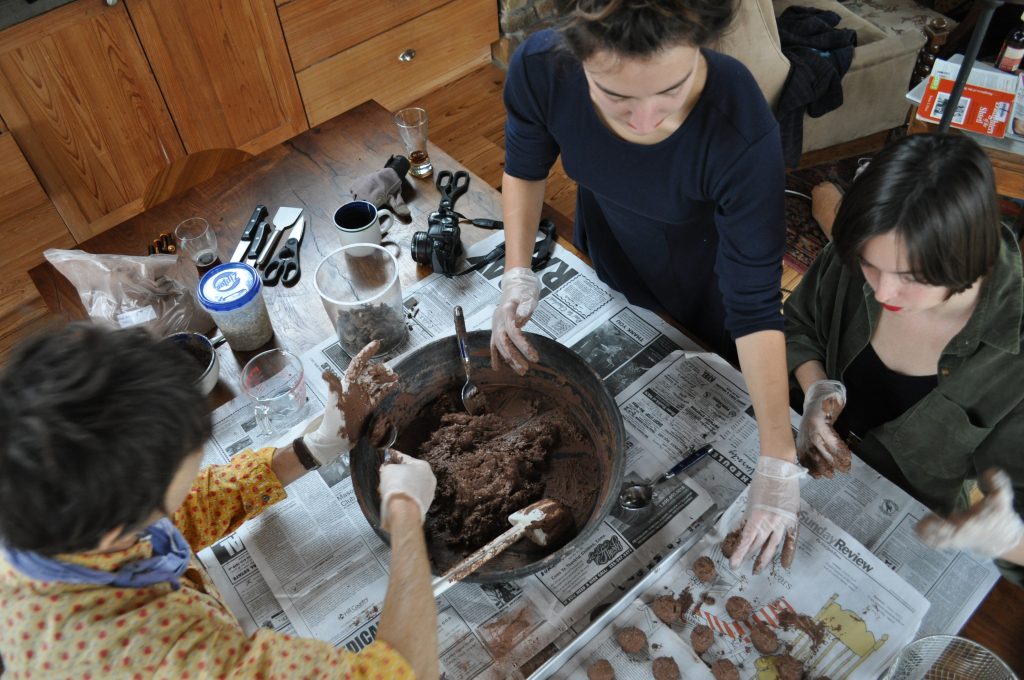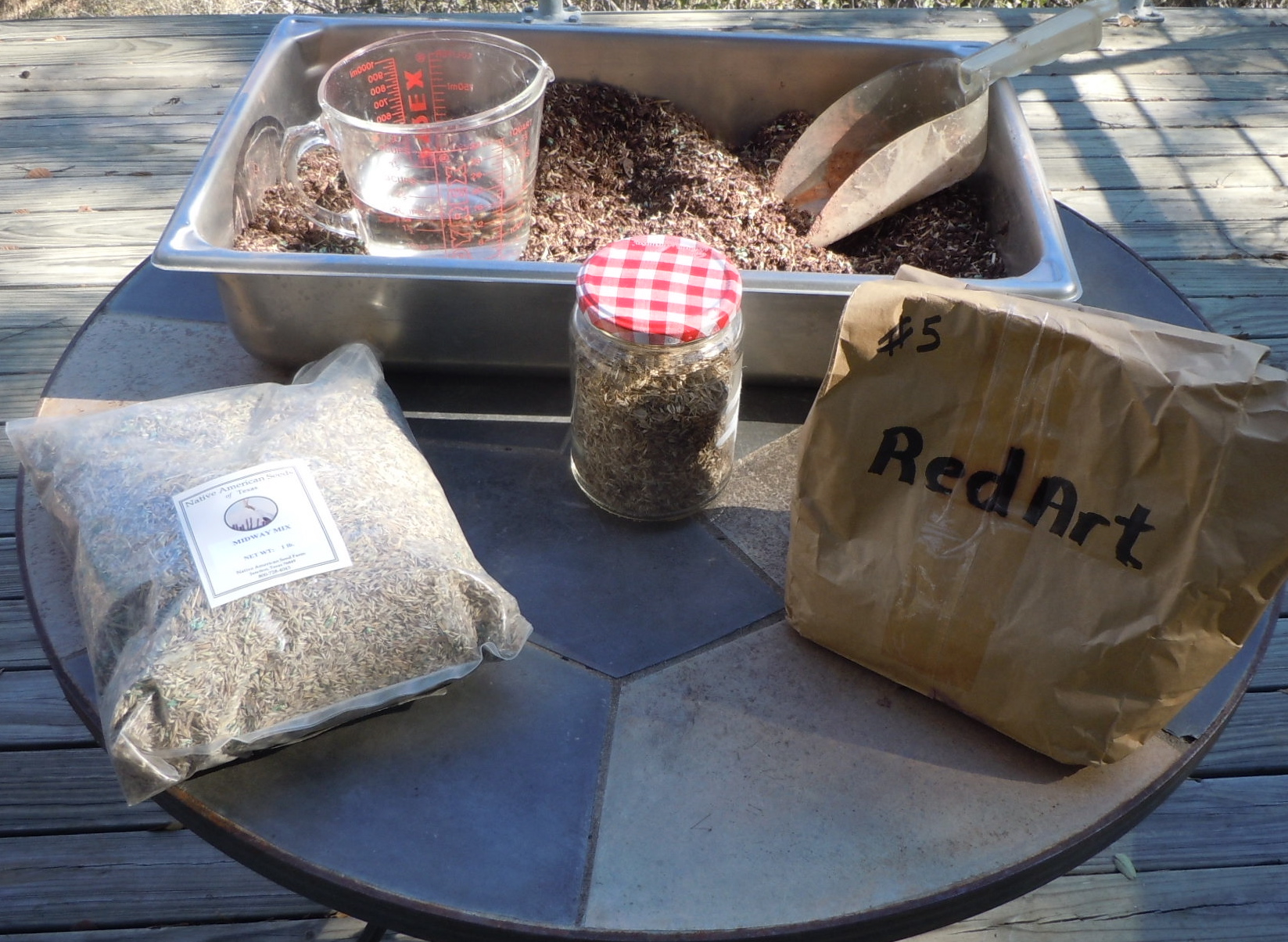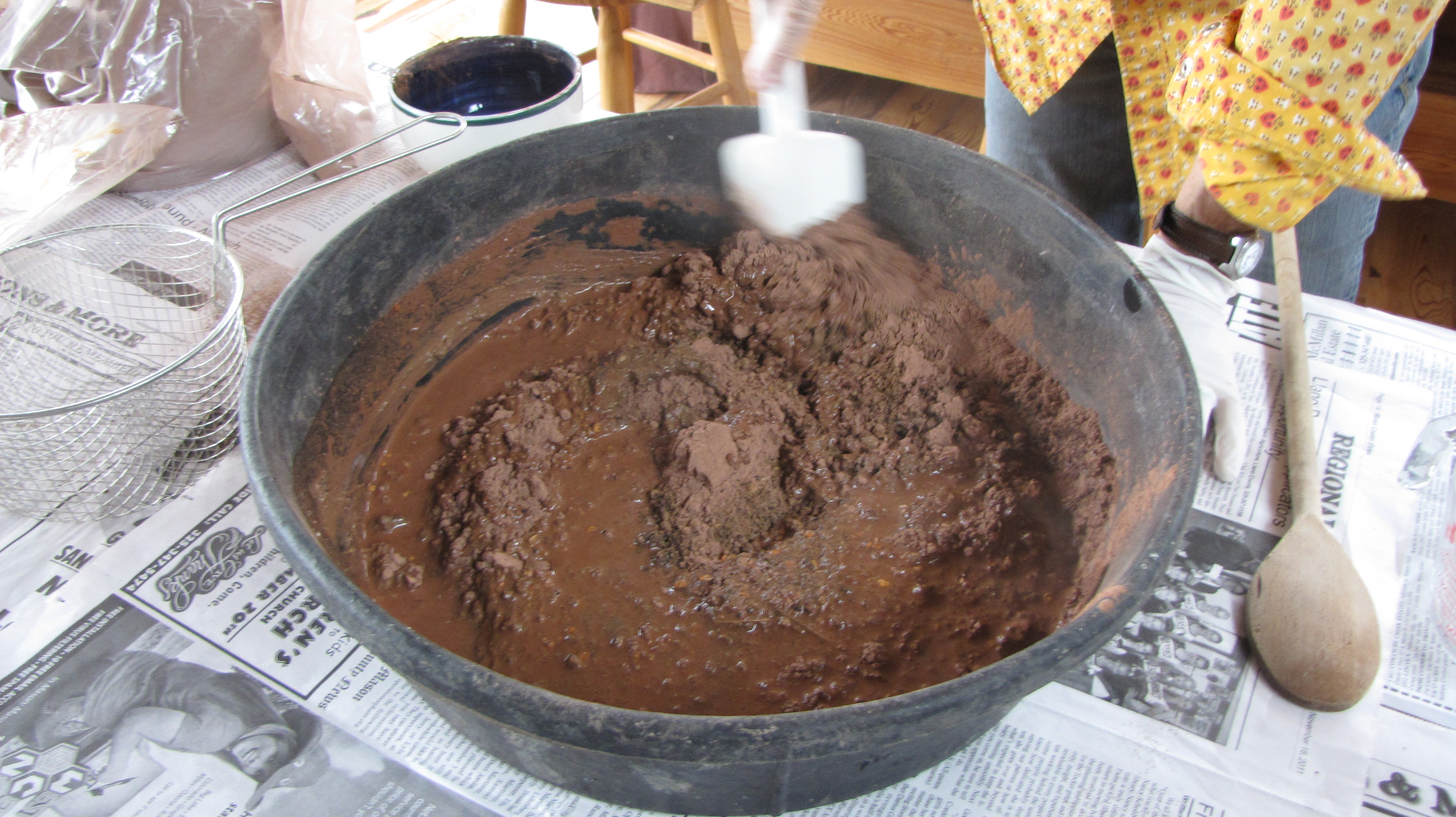This Saturday at 11:11 AM, the sun will move directly over the Tropic of Capricorn and we’ll experience the official start of winter–the December solstice. The sun will set on Saturday at 5:40 PM, clocking only 10 hours and 15 minutes (and 35 seconds if you’re counting) of daylight. This starts the march toward spring and marks the longest night and shortest day of the year.

Get ready for a long night this SAturday, December 21. It’s the winter solstice. Photo via NASA
In 2012, millions of survivalists, doomsday believers and new age spiritualists bought into the false notion that the world would end on the day of the winter solstice. A false reading of the Mayan calendar accounted for the madness. And here we are again, noting the first day of winter and the march toward spring.

Let there be seedballs! Mark the march toward spring and help make next year’s wildflowers happen by making seedballs. Photo by Monika Maeckle
At my house we choose to celebrate the arrival of winter with an annual rite of making seedballs. Some folks bake Christmas cookies. Others craft tamales. We like to mix soil, clay, water and seed with a generous dash of chile pepper to make seedballs, a facilitator of wildflowers, the nectar sources and hosts for next year’s butterflies.
What are seedballs?
Introduced in the 70s, seedballs are a form of “guerilla gardening” whereby seeds, soil and clay are mixed together into tidy germination bombs that are said to have an 80% higher success rate than simply broadcasting seeds onto soil. Adding red potters’ clay to the mix protects the seeds from being blown away by wind and a dash of chile pepper makes the seeds less tasty to insects and birds.

Collect seeds now for seedballs. Photo by Monika Maeckle
Generally, seedballs don’t require watering and you should NOT bury or plant them.
Simply toss them in a vacant lot, your front yard, or a wildscape situation like a ranch or roadside. Wait for rain to melt away the clay casing, and nature will do the rest.

Seedball party? Count me in. Photo by Hugh Daschbach
Seedball recipes vary as much as those for Christmas cookies. Some seedball aficionados recommend a 3:2:1 ratio of soil, clay and seed, adding nutrient rich ingredients like worm casings or other natural fortifiers. The Lady Bird Johnson Wildflower Center encourages a concoction that includes sifting, humus with good bacteria intact, your local soil, and

What do you need to make seedballs? Seeds, soil, clay and water–and chile powder. Photo by Monika Maeckle
sand. I’ve had great success using three parts local or potting soil, one-two parts red potter’s clay powder (purchased from a pottery supply) and one part seeds. The clay binds the ingredients and keeps the balls intact. Add water until you get a workable dough that allows you to roll a spoonful of seedball mix into a ball that doesn’t stick. If you find that your seedball dough is too watery, just wait. The soil soaks up the excess liquid with time.

Soil, seeds, red clay, water–and chili pepper. Mix until you get a consistency that is easily formed into seedballs. Photo by Monika Maeckle
Put them on newspaper to set up and then add my secret ingredient: red chile pepper. The pepper discourages insects, birds and other critters from denigrating or eating the seeds, giving them a better chance at germinating and becoming wildflowers for pollinators.

Seedball properly tossed. Throw them wherey they won’t compete with grass. Make sure it has contact with soil. Photo by Monika Maeckle
Once the seedballs set up, usually after 24 hours, store them in paper bags for later use or toss them right away.
When you toss them, make sure they land where they can make contact with soil, as in the photo above. If the seedballs have to compete directly with grass, leaves or forbs, germination rates of the seeds decrease.
Remember to use only native seeds for wildscaping situations. Good luck and let us know how it goes.

Seedball improperly tossed. Make sure it makes contact with soil. Photo by Monika Maeckle
Texas Butterfly Ranch Seedball Recipe
- 3 parts local soil or potting soil
- 1 – 2 parts red potter’s clay powder, also known as “terracotta powder” at pottery supply stores
- 1 part native wildflower seeds
- Water, as needed.
- Newspaper and cookie sheets for drying seedballs
- Stainless steal bowls or pots for mixing
More posts like this:
- Yo Soy Mariposista!
- Desperatey Seeking Milkweed: Monarch Caterpillars Appetites Create Milkweed Emergency
- Butterfly Farmer Edith Smith Keeps it All in the Family at Shady Oak Butterfly Farm
- How to Raise Monarch Butterflies at Home
- Part II: More Tips on Raising Monarch Caterpillars and Butterflies at Home
- Tropical Milkweed: To Plant it or Not is No Simple Question
- Oh Those Crazy Chrysalises: Caterpillars in Surprising Places
- Butterfly FAQ: Is it OK to Move a Chrysalis? Yes, and here’s how to do it
- Should You Bring in a Late Season Caterpillar into Your Home?
Like what you’re reading? Don’t miss a single post from the Texas Butterfly Ranch. Sign up for email delivery, like us on Facebook, or follow us on Twitter, @monikam.

Here, the sun will rise at 9:56 Saturday morning and set at 4:53 in the afternoon, giving 6 hours and 57 minutes of daylight. Enjoy your extra 3 hours and 18 minutes of solstice sun, Monika!
The chili powder is a great idea, but it doesn’t bother the birds. they like it and it’s high in vitimin C